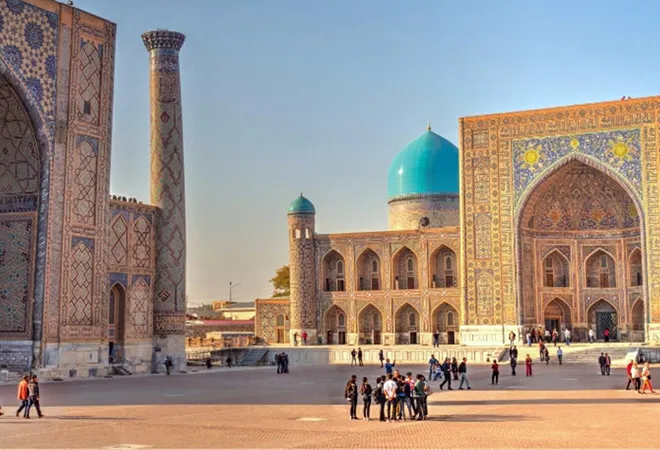
How Donald Trump has changed the world series>
In February 2020 the Trump administration renewed its strategy in Central Asia which, in the recent decades, has come under the increasing influence of China. The US has come to recognise the region—referred to as the “heart of Asia”—as crucial not only in its race with China for global dominance, but also in its efforts to fortify its position in its geopolitical rivalry with Russia. The renewed strategy came after a gap of five years and followed US Secretary of State Mike Pompeo’s visit to Central Asia to participate in a C5+1 High Level Dialogue.
While the C5+1 helped the US expand its footprint in the region, Pompeo’s visit happened at a time when the Central Asian Republics (CAR) are liberalising their political and economic institutions. Apart from the regular agenda that included discussions on topics such as good governance, trade, economic and political reforms, and energy connectivity, Pompeo’s visit also galvanised voices in the CAR against Beijing’s treatment of the Uyghurs and Kazaks. Pompeo tried to use the Uyghur card to gain maximum support for the US and challenge Beijing on its borders. Pompeo asked his Central Asian counterparts to offer asylum to these ethnic minorities fleeing persecution in Xinjiang, and to “beware of China”. Since then, however, none of the Central Asian countries have come out strongly against China’s treatment of their ethnic brethren.
The US’ Central Asian strategy calls for multilateral diplomacy with like-minded countries to support these countries’ “sovereignty, independence, and territorial integrity”. However, like those of his predecessors, Trump’s policy stresses on filling the shortcomings in the region—i.e., upholding the rule of law, promoting respect for human rights, and creating inclusive political systems through elections. These flaws have always been a sore point between the global democratic south and the Central Asian region and have been readily exploited by China to increase its dominance in its CAR neighbourhood.
However, despite the late thrust in 2020, Trump’s Central Asian policy has largely remained inconsistent, under-resourced and uncompetitive. It has also gained little buy-in for President Trump’s anti-Muslim rhetoric. In January 2020 Trump added Kyrgyzstan—considered the most democratic country in the region—to the US’ restricted travel list.
Indeed, Trump’s Central Asian strategy has been largely reactive and restrained. The lack of interest in the region under the Trump administration has given a freehand to Beijing to exercise its influence over the autocratic regimes of the region. Unlike its predecessors, the Trump administration has tried to increase the US’ geopolitical competition in Central Asia with China, Russia and Iran, but has largely failed to impress the region’s leaders. The absence of a comprehensive Central Asian policy under Trump has paved the way for China and Russia to more clearly project their interests in the heart of Asia.
The views expressed above belong to the author(s). ORF research and analyses now available on Telegram! Click here to access our curated content — blogs, longforms and interviews.




 PREV
PREV


